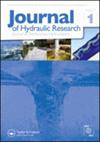Two simple theoretical models for teaching wave mechanics in coastal engineering
IF 1.7
3区 工程技术
Q3 ENGINEERING, CIVIL
引用次数: 0
Abstract
Waves are an integral component of teaching in coastal engineering. Some aspects of wave theory are however complex and outside the scope of e.g. introductory courses, so that only the results of the theory are used. For other wave effects such as overtopping, no theory exists, and purely empirical formulas are employed. This limits the students’ understanding of the problems. At Southampton University, we developed simple models for wave effects to improve the teaching. The models rely on basic hydraulic engineering principles such as continuity, conservation of energy and momentum, with the condition that the results are reasonably close to those from more complex theories or from experiments. In this article, two such models for the propagation speed of a solitary wave, and for the shallow water breaking criterion, will be presented. The results from both models are surprisingly close to the textbook formulas or values.海岸工程波浪力学教学的两个简单理论模型
波浪是海岸工程教学中不可或缺的组成部分。然而,波动理论的某些方面很复杂,超出了入门课程的范围,因此只使用理论的结果。对于其他波浪效应,如漫顶,不存在任何理论,而是使用纯经验公式。这限制了学生对问题的理解。在南安普顿大学,我们开发了波浪效应的简单模型来改进教学。这些模型依赖于基本的水利工程原理,如连续性、能量守恒和动量守恒,条件是结果与更复杂的理论或实验结果相当接近。在这篇文章中,将提出两个孤立波传播速度和浅水破碎准则的模型。这两个模型的结果与教科书中的公式或数值惊人地接近。
本文章由计算机程序翻译,如有差异,请以英文原文为准。
求助全文
约1分钟内获得全文
求助全文
来源期刊

Journal of Hydraulic Research
工程技术-工程:土木
CiteScore
4.90
自引率
4.30%
发文量
55
审稿时长
6.6 months
期刊介绍:
The Journal of Hydraulic Research (JHR) is the flagship journal of the International Association for Hydro-Environment Engineering and Research (IAHR). It publishes research papers in theoretical, experimental and computational hydraulics and fluid mechanics, particularly relating to rivers, lakes, estuaries, coasts, constructed waterways, and some internal flows such as pipe flows. To reflect current tendencies in water research, outcomes of interdisciplinary hydro-environment studies with a strong fluid mechanical component are especially invited. Although the preference is given to the fundamental issues, the papers focusing on important unconventional or emerging applications of broad interest are also welcome.
 求助内容:
求助内容: 应助结果提醒方式:
应助结果提醒方式:


